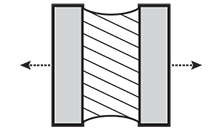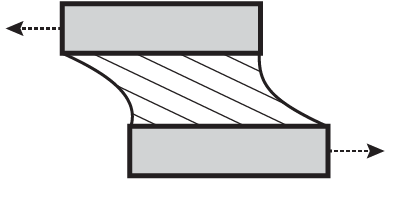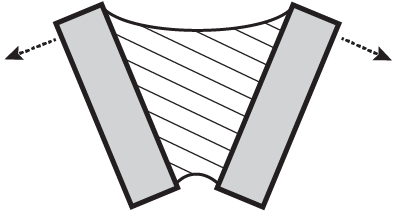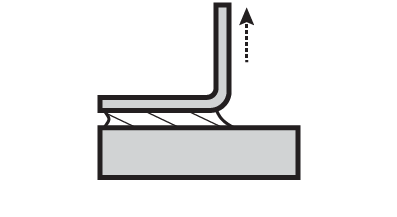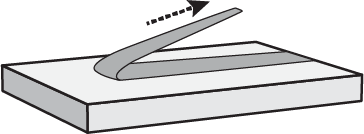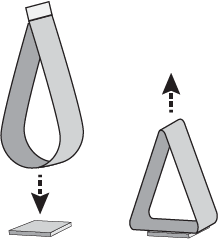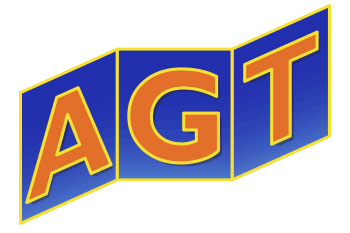Login Form
Registration
Profile Information
Login Data
or login
Information Center
FAQ'S
Do you do Custom Sizes, Color, Cuts, and Shapes?
Yes! we are a coating and converting company, meaning, we have the capability to coat almost any material as well as provide you with custom sizes, shapes, and cuts to fit your adhesive tape application.
What is the difference between rubber and acrylic based adhesives?
Rubber-based adhesives have an aggressive and immediate bond to a variety of surfaces but are not the preferable adhesives for sunlight exposure as well as flexibility. Acrylic-based adhesives provide a higher temperature resistance, perform well in exposed sunlight and work with flexible materials. Acrylic adhesives usually take 24-48 hours to reach full strength in bonding.
How long does removable adhesive hold?
Once bonded on a clean surface, removable adhesives can last over 12 months and still remove cleanly. Exposure to sunlight and extreme temperatures can reduce the holding power of these adhesives.
What is the best way to clean a surface?
Using a 50/50 mixture of Isopropyl Alcohol and water then drying with a clean lint-free cloth is the simplest way to make sure a surface is clean. Using products that can leave a residue, such as commercial window cleaners are not recommended.
Which adhesive can withstand the outdoors?
Acrylic adhesives provide a wider temperature range and are usually better suited for outdoor use. All pressure sensitive adhesives need to be applied at ambient temperature for best results.
How much weight can foam tape hold?
Permanent adhesives such as Pop Stick, can hold up to 1lb PSI. Removable adhesives such as Temp Tape can hold up 1/2lb PSI. Conditions and variables do apply and can produce different results.
What thickness of foam should I use?
For most POP display applications, use 1/32" thickness. For corrugated or textured surfaces, a 1/16" thickness would be better. Greater thicknesses are available to add gap filling as needed.
What is the difference between a Silicone-based adhesive and other commonly known adhesives?
Silicones have special properties compared to other adhesives. They have a wide temperature range with low temperatures of -100°F (-75°C) and very good temperature stability up to 390°F (200°C) with continuous exposure up to 575°F (300°C) for short periods. The properties of silicones remain virtually unchanged over this temperature range. Silicones have excellent resistance to moisture, chemicals, and weathering. They bond well to silicone foams and rubbers. Silicones are also used for splicing silicone release coated materials. Silicone Adhesives are also used in various masking applications where clean removability is required.
APPLICATIONS
Tips for obtaining an optimal bond:
Silicone Adhesive Rubber base adhesives provide a greater initial adhesion (initial tack), which is an immediate stick when needed for load bearing.
Adhesion:
Adhesion is the bond or force of attraction between two materials or substrates. The strength of a bond is determined by the surface energy of the applicant. The higher the surface energy, the greater the attraction. Adhesion characteristics are different depending on the surface it is applied to. Knowing the substrate used helps to determine the proper adhesive chemicals to use to produce a quality bond. The texture of the applicant is also a variable in the effect of the adhesion. Smooth surfaces are easier to bond to than textured or rough surfaces. AGT's application technicians can analyze your substrate and external factors for your bond in order to help you determine the best product(s) for your application.
Substrates:
Many applications are involved with two substrates. One will bond with the unwind adhesive during a converting process known as "lamination". The second will bond with a liner side adhesive known as "mounting".
Surface Energy:
Surface Energy is the amount of resistance a substrate will affect the adhesives ability to "wet out" or spread over the application. For example Low Surface Energy (LSE) materials resist adhesive wet out, making bonding to the surface difficult. A rubber and acrylic based adhesives typically provide a stronger adhesion to LSE substrates.
Surface Texture:
The texture of a surface area can affect the adhesive bond strength. Very rigid textured materials do not allow a 100% contact of the adhesive (less contact + less adhesion area = lower bond strength).
Performance improvements rigid textured materials:
- Greater adhesive mass allows for more surface area to be bonded.
- Softer adhesives have better flow properties.
- Aggressive adhesives maximize adhesion strength at contact areas.
- Flexible tape conforms into the texture.
Surface Contamination:
Contamination on surfaces can prevent an effective bond from the adhesive. To avoid common surface contamination, simply clean the area (by washing or flame treating) to ensure a stronger bond.
Common contaminants:
- Dust
- Ultraviolet light
- Temperature
- Surface coating
- Humidity
- Physical stress
- Chemicals
- Surface contact
- Time
- Weather
BONDING STRENGTH
Adhesive strengths can be matched to the substrate and stress to which the adhesion will be exposed to. Most tapes perform at a higher bond when the primary stress is tensile or shear. In some industries a combination of stresses may involve cleavage and peel.
ADHESIVE CHARACTERISTICS:
Rubber-Based:
A rubber-based adhesive provides the most cost effective solution for a variety of applications. It's ability to immediately and aggressively bond to many different surfaces makes it the first option when using double sided adhesive.
Characteristics:
- High initial adhesion
- Some adhesion build up
- Good shear strength
- Moderate temperature resistance
- Fair UV resistance
- Poor plasticizer resistance
ACRYLIC-BASED:
Pure acrylic adhesive is able to withstand extreme UV exposure better then a rubber-based. Acrylic adhesives are resistant to plasticizers but will typically require longer set-up time to create a strong bond, generally 24–48 hours.
Characteristics:
- Fair initial adhesion
- Gradual adhesion build up
- High shear strength
- High temperature resistance
- Excellent UV resistance
- Good plasticizer resistance
MODIFIED ACRYLIC-BASED:
Modified Acrylic contains the best properties of both rubber and acrylic-based adhesives. These adhesives are UV resistant, withstand higher temperatures, and bonds well to many substrates with a higher initial tack.
**NEW** SILICONE-BASED:
Silicones have special properties compared to other adhesives. They have a wide temperature range with low temperatures of -100°F (-75°C) and very good temperature stability up to 390°F (200°C) with continuous exposure up to 575°F (300°C) for short periods. The properties of silicones remain virtually unchanged over this temperature range. Silicones have excellent resistance to moisture, chemicals, and weathering. They bond well to Silicone foams and rubbers. Silicones are also used for splicing silicone release coated materials. Silicone adhesives are also used in various masking applications where clean removability is required.
REMOVABLE ADHESIVES:
Removable adhesives are a short-term, non-permanent Adhesive that can easily be removed with little to no residue. They are nonaggressive adhesives, but can still hold strong for over 12 months. AGT offers double or single-sided removable adhesive tapes.
QUALITY
As an ISO:9001 certified company, AGT provides quality adhesive testing with our state of the art quality machinery. With maturing ovens to accurately predict the aging process of your adhesive known as AAT (Accelerated Aging Test), to Sticking measurements which measures the strength of the adhesive bond against gravity (Cohesion Testing). With our lab testing equipment we can match any previous adhesive bonds you may have from previous suppliers matching it identically.
QUALITY APPLICATION TESTS:
ADHESION:
"Adhesion" is the attracted force between the adhesive and the contact surface. The strength of the adhesion is determined by the applications Surface Energy and chemical compounds of the adhesive.
Tack:
"Tack" is the property of pressure-sensitive adhesive (PSA) that allows it to adhere to a surface with very light pressure needed know as "Quick Stick".
Cohesion:
Cohesion or Cohesive strength, refers to the internal strength of the adhesive and its ability to resist splitting caused by shearing forces. Cohesion is measured by its resistance to forces parallel to the application surface.


